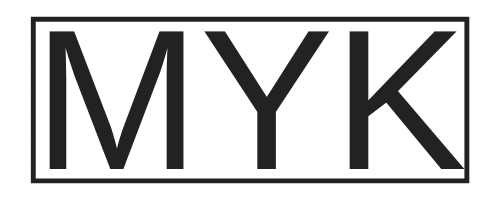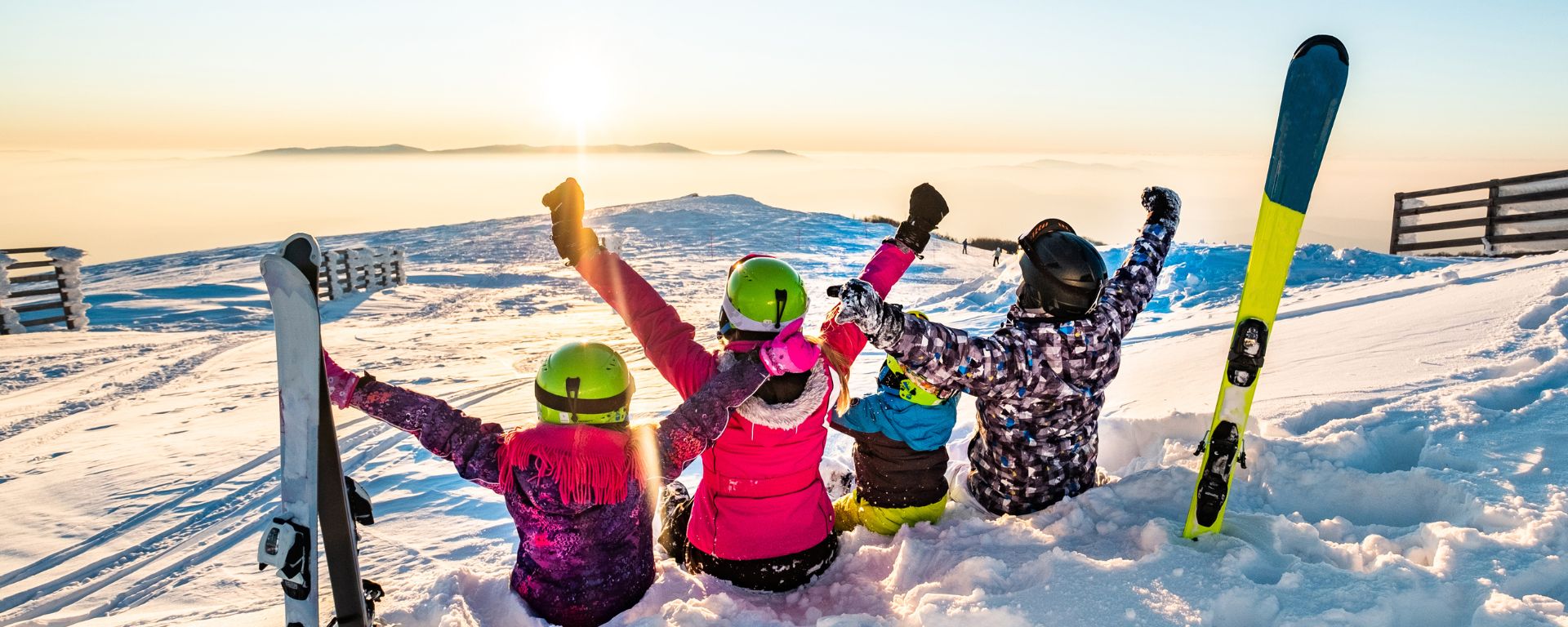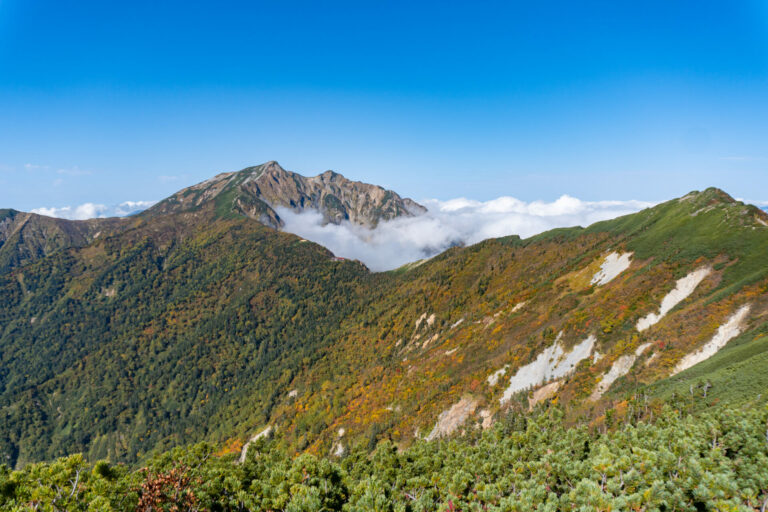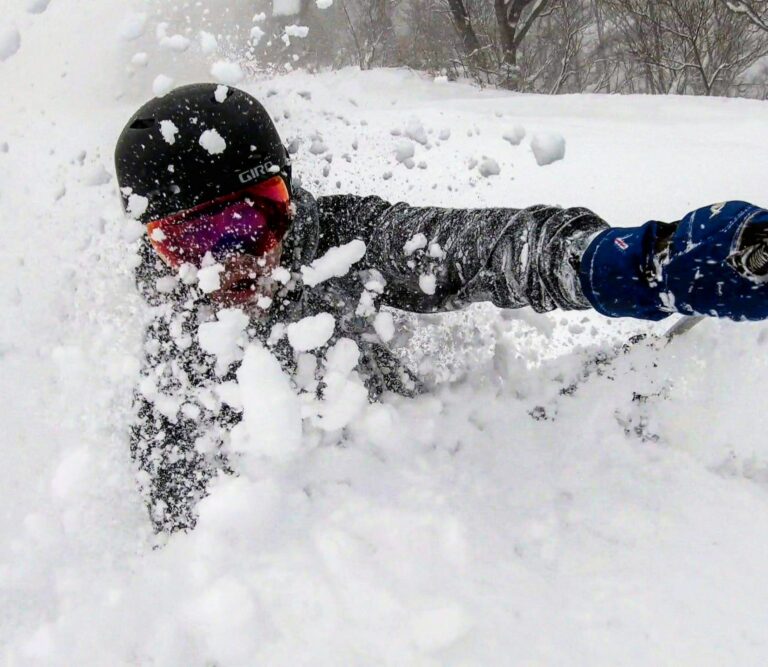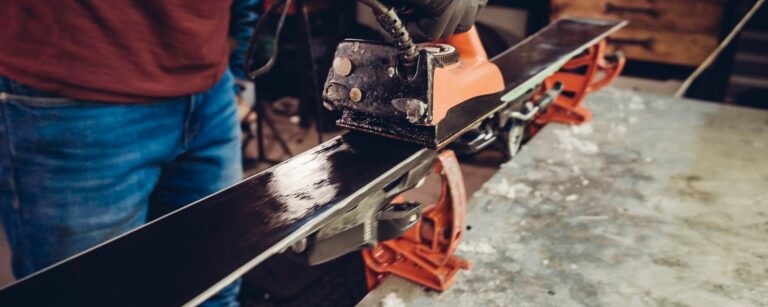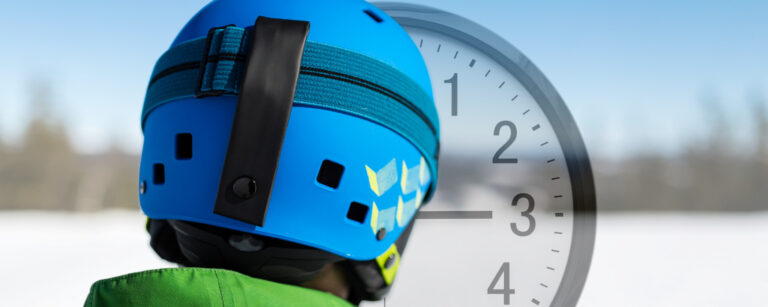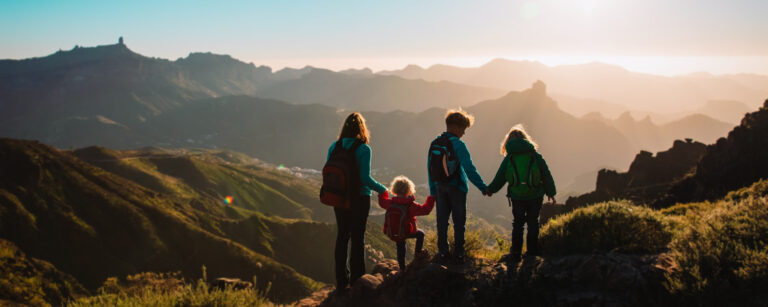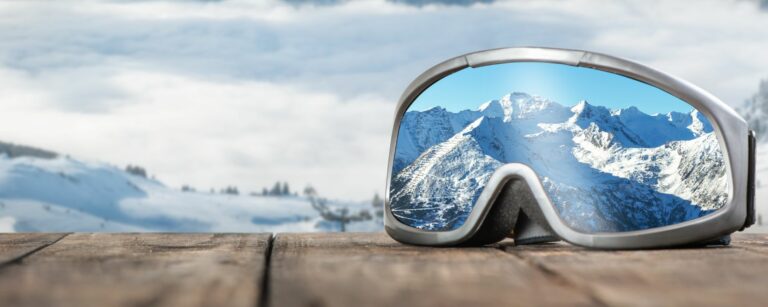How To Choose Skis 2023 – Guide And Size Chart
Choosing the right pair of downhill skis can be a daunting task. Understanding how rocker, camber width, and length work together is complex. Combine that with hundreds of online reviews, each telling you which ski they think is best, and you have a recipe for disaster. I have been burned too many times buying a ski after reading online reviews only to discover that it doesn’t meet my expectations. In this guide on how to choose skis, I will give you some general guidelines on the features of different ski types, a recommendation on who each ski type is for, and how you can choose the right ski.
Here are some factors to consider when choosing a pair of skis:
- Length: The length of a ski affects how it performs and how the skier will feel when skiing.
- Turn Radius: The turn radius is how tight of a turn the ski can make. Longer skis will have a longer turn radius, and shorter skis will have a shorter one.
- Waist Width: How wide a ski’s waist is in millimeters.
- Camber/Rocker Profile: The shape of the ski’s base. Camber is concave, while rocker is convex.
Types of Downhill Skis
Downhill skis are designed to be used on various types of terrain and snow. Each type of ski has unique features that make it better suited to specific kinds of skiing.
Carving Skis
- Waist Width: 65mm – 80mm
- Profile: Camber
Carving skis are designed to be used on groomed runs. They are typically shorter and have a wider waist, which allows them to provide better control on groomed runs. Cambered skis help to keep the ski edge engaged in the snow for maximum grip and stability.
Who Are They For
Carving skis are meant to be skied on the piste. The narrow width allows them to be turned quickly, but they do not float through crud like an all-mountain ski. They range from beginner to expert, with some models specifically designed for racing.
How to Choose Carving Skis
- Flex: The stiffer the ski, the greater the performance. Beginners and intermediates should choose softer, more forgiving skis.
- Turn Radius: The smaller the radius, the smaller the turn the skis will perform. Slalom skis will have a turn radius of 11m – 13m, while a GS ski will have a radius of 20m+
- Ski Length: A carving ski should be between your chin and forehead for most skiers. However, this rule doesn’t apply to race skis, as discipline will dictate the length.
All-Mountain Skis
- Waist Width: 80mm-100mm
- Profile: Camber
All-mountain skis are similar to carving skis, except they have a wider waist and are generally longer. They are designed for groomed runs and off-piste areas. They provide increased stability, flotation, and control in various terrain types.
Who Are They For
All-mountain skis generally do everything. An all-mountain ski is an excellent option for skiers who want a single ski to explore the mountain in all snow conditions.
How to Choose All-Mountain Skis
- Flex: A beginner or intermediate skier should choose a softer, more forgiving ski, while an expert will want a stiff ski.
- Turn Radius: Turn radius will vary depending on whether you want to perform short or long turns. Many all-mountain skis split the difference with a medium turn radius.
- Ski Length: Skis should be anywhere from chin height to slightly taller than you are.
Powder Skis
- Waist Width: 105mm+
- Profile: Rocker/Camber/Rocker, Camber/Rocker, Reverse Camber
Powder skis have a wide waist and long length to provide maximum flotation in deep snow. Many powder skis have tip and tail rocker that helps to keep the ski afloat in the deepest powder.
Who Are They For
They are meant for skiing deep soft snow. For skiers who live in or near a mountain resort that gets a lot of snow, they are a great tool to have.
I now own a pair of powder skis, but before moving to Japan, there was no point. I would rent a pair if I went to the mountains on a powder day.
How to Choose Powder Skis
- Waist Width: The fatter the ski, the greater the float. The deeper the snow, the more float is needed to keep your speed up in the powder. This is size, weight, and level dependent, but 100mm+ for knee-deep powder and 115+ for anything above the knee.
- Ski Profile: Tip rocker is critical to the ability to float. If you plan on skiing switch, tip and tail rocker is essential. I prefer cambered skis underfoot for performance on anything groomed, but a full rocker is fine if you only ski powder.
- Ski Length: I prefer a longer powder ski. The longer the ski, the more surface area for float. I recommend forehead height or longer.
- Turn Radius: Choose a turn radius that matches your ski preference. If you want to ski tight trees, then you want to choose a smaller radius ski 16m – 19m. If you plan on skiing big wide-open bowls in long gs turns, consider an 18m – 20m radius ski. (turn radius is not as critical with a powder ski because a lot of the turn happens during the pop while your skis are out of the snow)
- Flex: There are two schools of thought on powder ski flex. Soft skis float better in soft snow and provide better flotation. However, stiff skis are great for charging through tracked powder and crud. I fall somewhere in the middle. I’m not a fan of a heavy-damp ski and prefer a light poppy feel that allows me to bounce in and out of the powder. I would rather sacrifice the stability in crud for the chance to float through the snow.
**Pro Tip: Consider putting a pair of touring bindings on your powder ski. A hybrid binding will give you the best of both worlds, allowing you to confidently ski in-bounds and switch to uphill mode when you need to earn your turns.
Freestyle Skis
- Waist Width: 80mm – 95mm
- Profile: Rocker/Camber/Rocker, Rocker/Flat/Rocker
Freestyle skis are for skiing on and off-piste terrain and park/pipe skiing. They typically have a slightly softer flex, are shorter skis, and lighter weight for more maneuverability and a symmetrical sidecut so they can be skied switch. Freestyle skis also often have a twin-tips, meaning they have upturned tips and tails that make it easier to land tricks in the terrain park.
Who They Are For
Freestyle skis are designed for intermediate/advanced to expert level skiers who like to ski off-piste, in the terrain park and pipe. They can also be great skis for beginner/intermediate-level skiers who want a versatile all-mountain ski that can handle any condition or terrain.
How to Choose Freestyle Skis
- Waist Width: Recommended width should be between 80mm – 95mm
- Ski Profile: Freestyle skis should have tip and tail rocker with camber under the foot.
- Flex: Freestyle skis are designed with softer flex to provide more agility and versatility during jumps, tricks, or rails. When the tip and tail have an equivalent flex, it simplifies riding switched on landings or takeoffs.
- Length: A shorter ski is better for maneuverability, while a longer ski provides more stability. Skis should be no shorter than 5cm less than your height.
Touring Skis
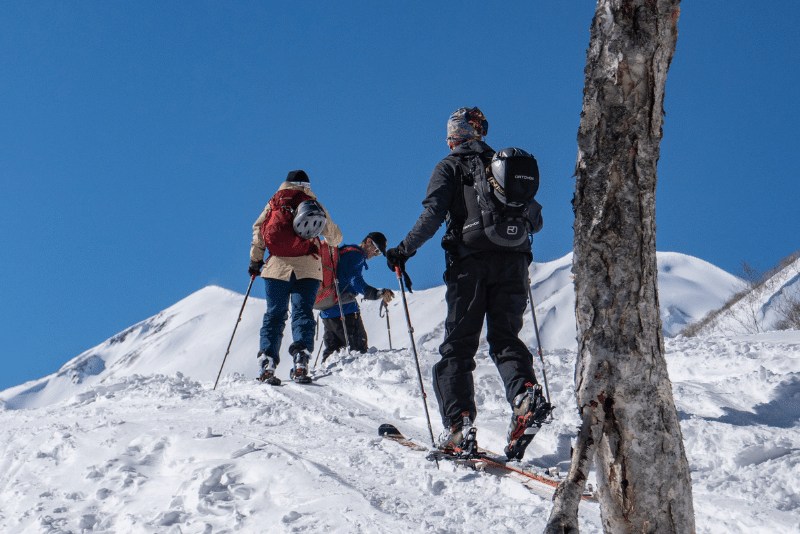
- Waist Width: 90mm – 105+
- Profile: Camber/Rocker, Rocker/Camber/Rocker
Touring or backcountry skis are lightweight for skinning uphill and have touring bindings. Touring skis also have a slight rocker profile to help provide increased flotation in deep snow.
Who Are They For
Backcountry skis are all about earning your turns. While many touring skis can be used inbound, they often sacrifice downhill performance for an easier hike. This isn’t an issue when skiing powder, but the edge hold on piste will be limited. If you plan to tour often or want a dedicated backcountry setup, then touring skis are for you.
How to Choose Touring Skis
There are four main factors to consider when choosing a powder ski.
- Waist Width: Touring skis typically have wider 90mm+ to accommodate softer snow.
- Ski Profile: A ski with tip rocker and camber underfoot is preferred
- Ski Length: Skis can range in length from your forehead or taller.
- Flex: Flex should be soft to medium.
Downhill Ski Dimensions
Downhill ski width is measured at three points on the ski. These are the tips, tails, and waist.
Tip Width
The tip width is measured across the widest point at the ski’s nose. This measurement helps determine how much flotation the ski will have in deep snow and how quickly it will turn on groomed runs.
Waist Width
The width is measured underfoot and is the narrowest point of the ski.
Tail Width
The tail width is measured across the widest point at the ski’s tail.
Ski Length Size Chart
The chart below provides a general guideline for the proper ski length based on height, weight, and ability level. Take these size lengths with a grain of salt. They are meant as general guidelines, and will differ depending on the type of ski you purchase and how you intend to ski.
@media screen and (max-width: 767px) {.tg {width: auto !important;}.tg col {width: auto !important;}.tg-wrap {overflow-x: auto;-webkit-overflow-scrolling: touch;margin: auto 0px;}}Downhill Ski Camber and Rocker
Ski profiles are designed with a combination of rocker and camber. Rockered skis have tips and tails that lift off the ground, and camber is when the middle of the ski is raised while the tip and tail stay in contact with the snow.
Camber
A cambered ski creates a powerful edge hold, excellent stability at high speeds, a better rebound, and increased energy transfer.
Rocker
Ski rocker provides float in soft snow and prevents the tips and tails from digging into the snow.
Ski Profiles
Ski profiles are made by combining camber and rocker in different configurations.
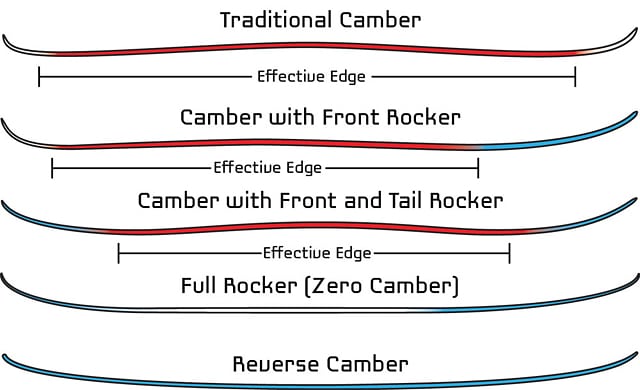
Turn Radius
Turn radius is the radius of the circle that a ski will create if it is put on edge. A smaller turn radius indicates quicker turning and vice versa. The sidecut is how the width of the ski changes along its length. Skis with deeper sidecuts will have a smaller turn radius, while skis with shallower sidecuts will have a bigger turn radius.
Flex
Ski flex is how much the ski will bend. A stiffer ski will provide more stability and power, while a softer ski will be easier to turn and maneuver.
Flex Pattern
The flex pattern refers to how the flex varies along the length of the ski. Skis are often designed with softer tips and tails to allow the tip of the skis to grip the snow better, while stiffer mid-bodies and tails provide increased power and stability. Powder skis usually have softer tips so that the shovel of the ski will bend and improve how quickly the ski starts to float.
Where to Buy Skis
My number one recommendation for buying skis is to try them first. Many hills offer demo days where multiple manufacturers bring out skis for you to try before purchasing. Call your local hill and ask them when the next Demo day will be.
Once you have found a pair of skis you love, you can buy from:
- Ski shop
- Sports store
- Online Outdoor Store
How to Store Your Skis In the Off Season
New skiers are often unaware of the proper storage and maintenance required to keep their skis in good shape. When you store your skis in the off-season, keep them in a dry, cool location, and be sure to apply a summer wax.
FAQ
How should I choose my skis?
The best way to choose a pair of skis is to go to a demo day at your local hill. During a demo day, you can ride various skis from multiple manufacturers and decide which ski is best for you.
When choosing skis, consider your skiing ability, how often you plan to ski, where you ski, and the terrain you prefer. Finally, when selecting a pair of skis, pay attention to the width, ski profile, length, and flex. All of these factors will affect how the skis perform on the slopes.
I don’t recommend choosing a ski based on online reviews. Every person skis a little differently, which heavily impacts how a ski performs. Your weight, height, skiing style, and skiing level will affect how a ski performs for you. I never buy a pair of skis without having tried them first. I’ve been burned too many times reading online reviews to find out that as soon as I try the ski, it performs nothing like the reviewers claimed.
What is the best ski for a beginner?
For beginners, it’s essential to choose lightweight and easy-to-maneuver skis. A good choice would be a shorter pair of all-mountain skis with moderate flex and a moderate waist. Typical beginner ski qualities include a softer flex, a shorter ski, and a medium-width underfoot.
Final Thoughts
Deciding how to choose skis can be a daunting task. But with some information, you can decide on the best ski for you and your skiing style. Refrain from obsessing over online reviews, which can be misleading and make choosing a ski more difficult. Instead, do some preliminary research, and then try out several demo pairs before deciding which ski is right for you. Choose the right ski length, style, and flex for your weight and skiing level. Good luck!
Hopefully, this guide has helped you better understand how to choose the best downhill skis for you. Remember that each person skis differently, and what works best for someone else may not be the right choice for you. So do your research, read reviews, and ask around. If you are still trying to decide, ask an expert at a reputable ski shop, or talk to a ski instructor who can recommend the best ski.
